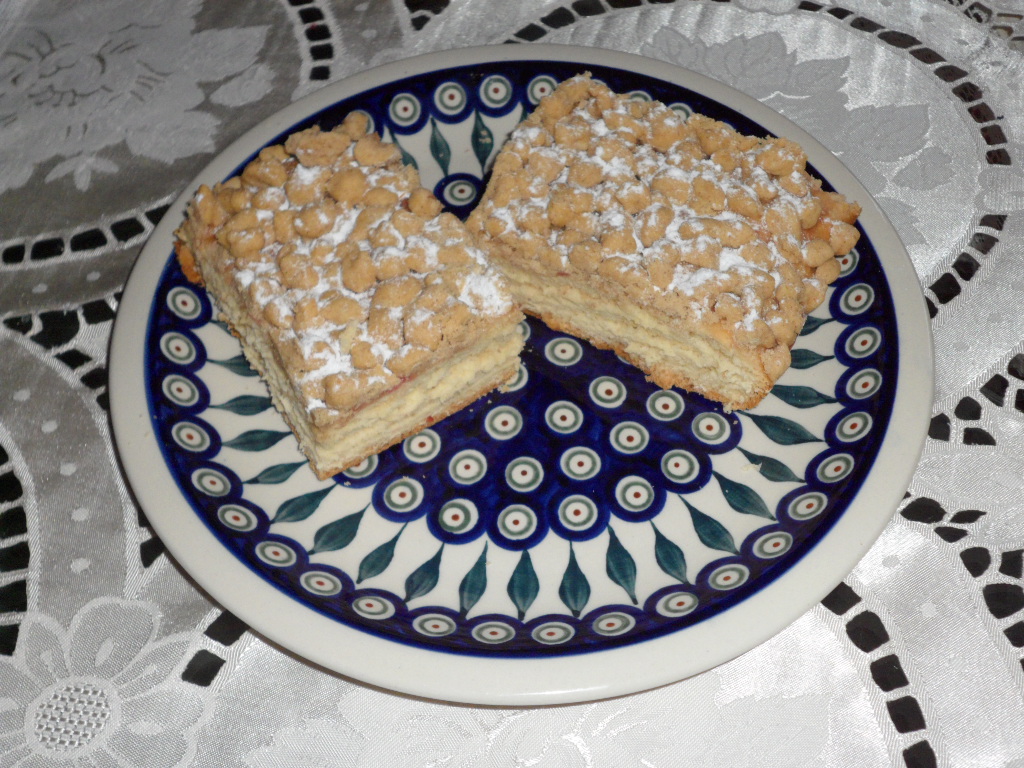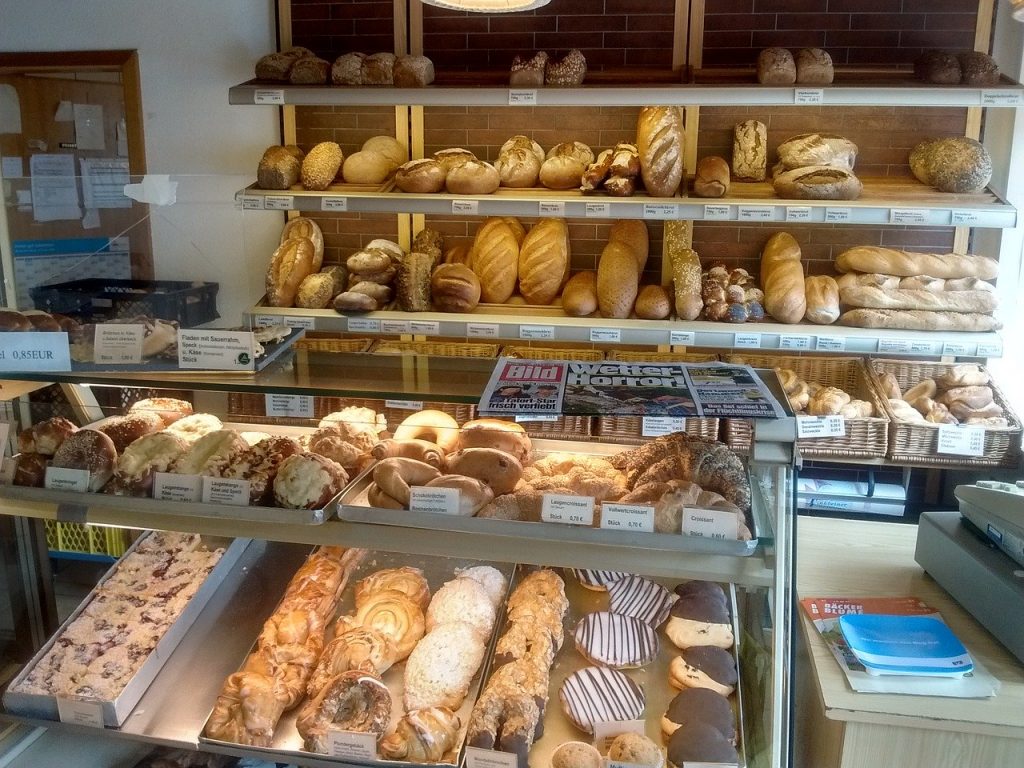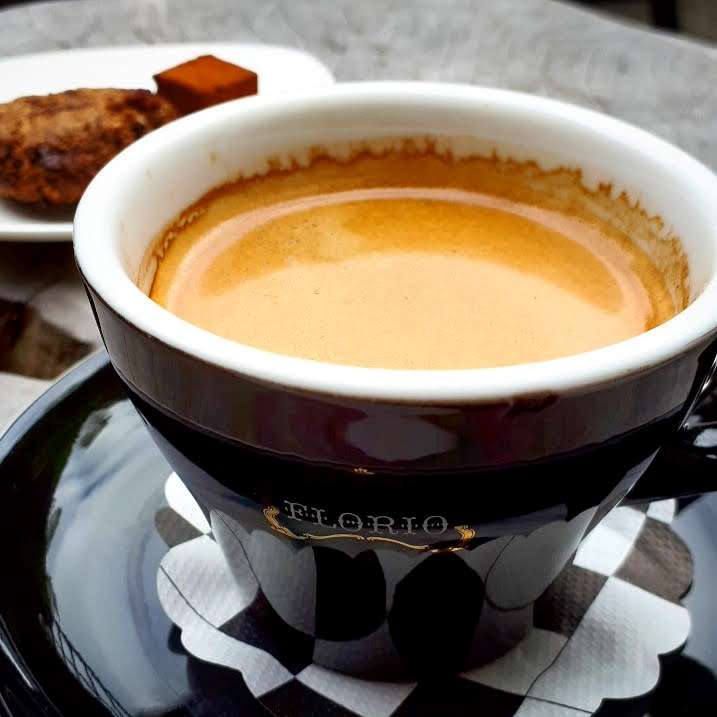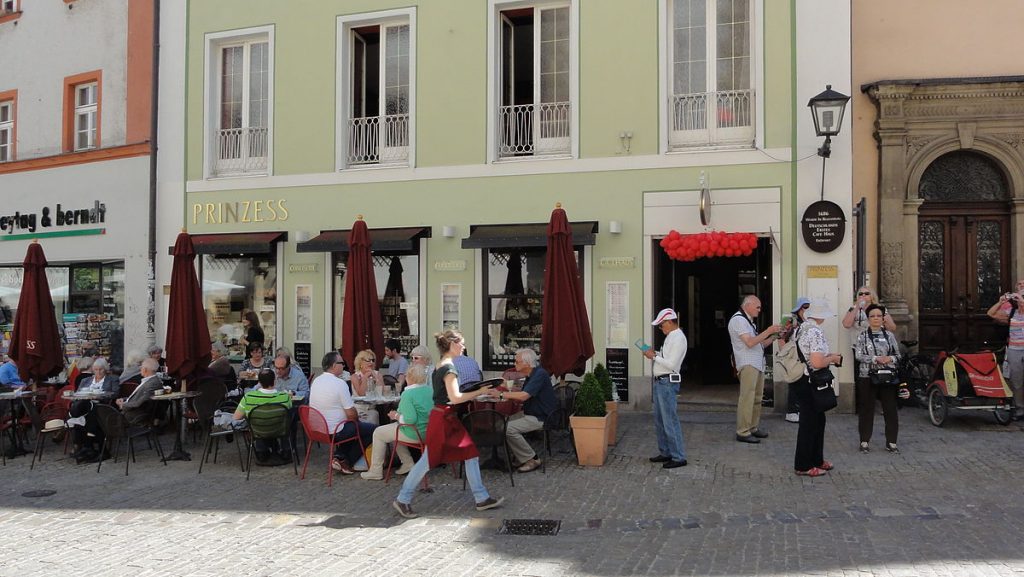A Delicious German Tradition: Kaffee und Kuchen! Posted by Sten on Jun 12, 2020 in Culture, Food, Traditions
It’s time for Kaffee und Kuchen! Every Sunday, usually, Germans come together for Kaffee (coffee) and Kuchen (cake). What does this tradition look like, how do you do it right? And where does it come from? Let’s have a entspannten (relaxing) look!
Noch ein Stück?
It’s Sonntag (Sunday), and you’re invited by your friend to come to their home for Kaffee und Kuchen in the afternoon, between fünfzehn Uhr and siebzehn Uhr. Once you get there, you smell a wonderful scent of a warm Streuselkuchen (crumb cake). You get a hot Tasse Kaffee (cup of coffee) and a fresh Stück (piece) of Streuselkuchen. You’re enjoying it, finish it, and are asked: Möchtest du noch ein Stück? (Do you want another piece?)
In Germany, it is not rude to refuse another Stück. But it is expected that one is offered another Stück. So if you invite friends over for Kaffee und Kuchen, make sure you have plenty! If you have leftovers, you can always offer it to them to take home, or have more Kaffee und Kuchen for the day after.
And if you don’t like to bake yourself, you can just go to a Bäckerei (bakery) or Konditorei (confectionary) and pick and mix pieces at the Kuchentheke (cake counter). Every Bäckerei you come across in Germany should have some Blechkuchen (sheet cake) like the Streuselkuchen above, or Teilchen (buns), like Berliner or Apfeltaschen (apple turnover). Or a fun one, get an Amerikaner (“American”), a round Teilchen with Zuckerguss (frosting).
Now, it’s not bad to only have one Stück for each person, of course. Also healthier, and Germans understand that! The Kaffee is the most important part. Kaffee und Kuchen can be survived if all you have is Plätzchen (cookies), but if you don’t have Kaffee… Then what are you doing?
Now, when it comes to Kaffee, Germans aren’t too demanding. A normal cup of Filterkaffee (filter coffee), with perhaps some Milch (milk) and Zucker (sugar) is just fine. Now, if you can and want to offer Espresso (espresso), Cappuccino (cappuccino) or a Milchkaffee (“milk coffee”, often this is pretty much a Latte Macchiato), your guests will appreciate it. But it’s not a must at all!
Kaffeehäuser
The first Kaffeehaus (coffee house) or café (coffee shop) in Germany was opened in 1673 in Bremen. Where exactly is unknown. Other Kaffeehäuser followed soon later. In 1686, a Kaffeehaus was opened in Regensburg, and it exists to this day: Café Prinzess.
These Kaffeehäuser became social focal points, and became the birthplaces of many things, like the use of postboxes, newspapers and many shows and concerts. And of course, of the tradition to have something small and sweet with the Kaffee.
These days, Cafés don’t have much of that flair left. The shows were replaced by lounges with soft jazz music, room plants and dim lighting. But Kuchen? That you can still get there!
Kaffee and Kuchen also had an impact on German vocabulary. Check out this post on the untranslatable German words Kaffeeklatsch and Kaffeefahrt:
Do you have a tradition of Kaffee und Kuchen in your country? Let me know in the comments below!

Build vocabulary, practice pronunciation, and more with Transparent Language Online. Available anytime, anywhere, on any device.







